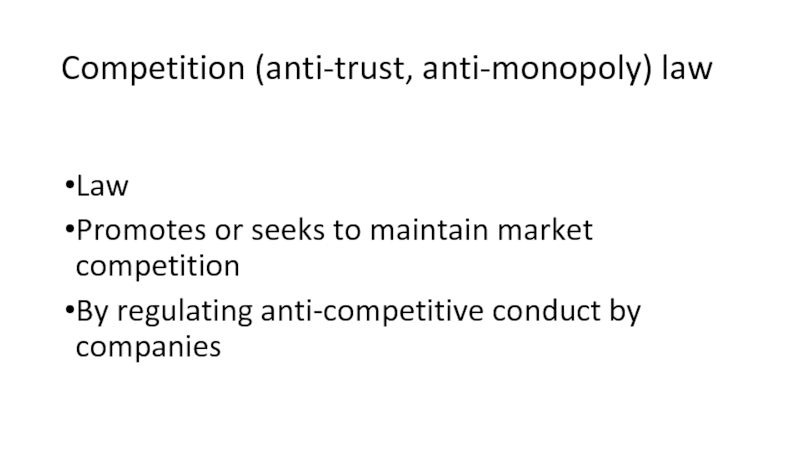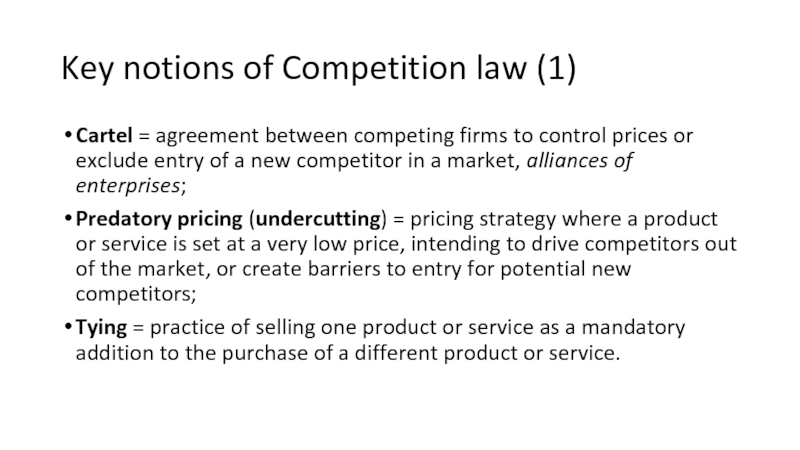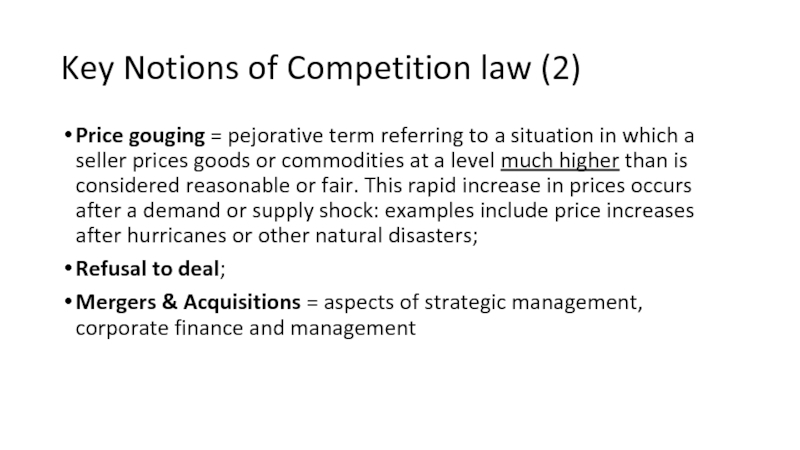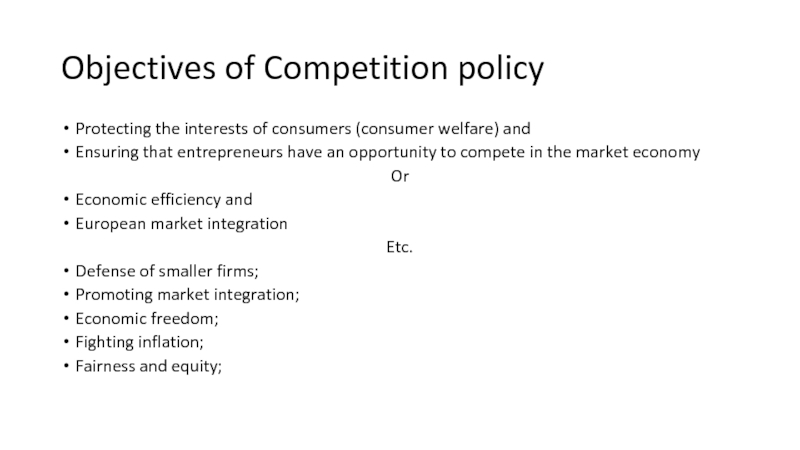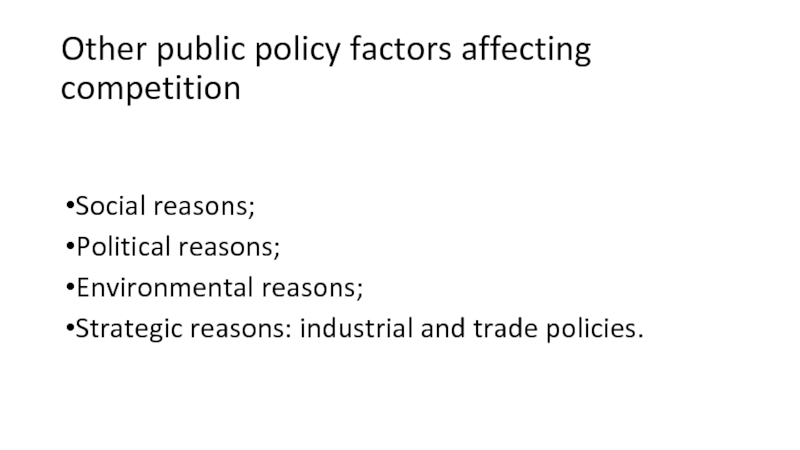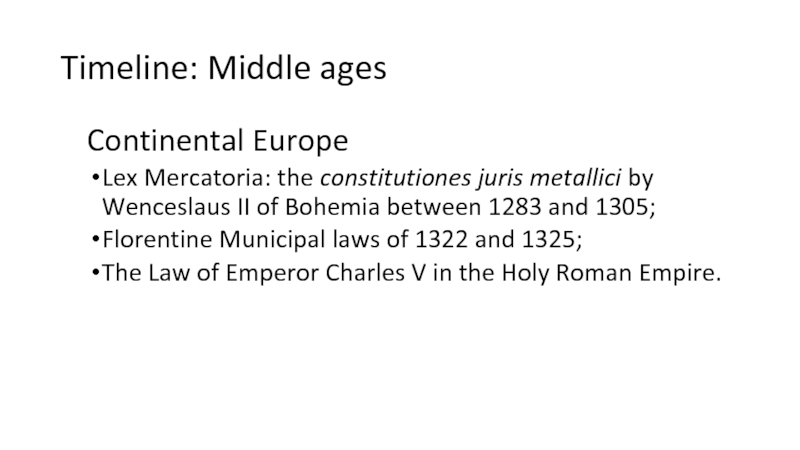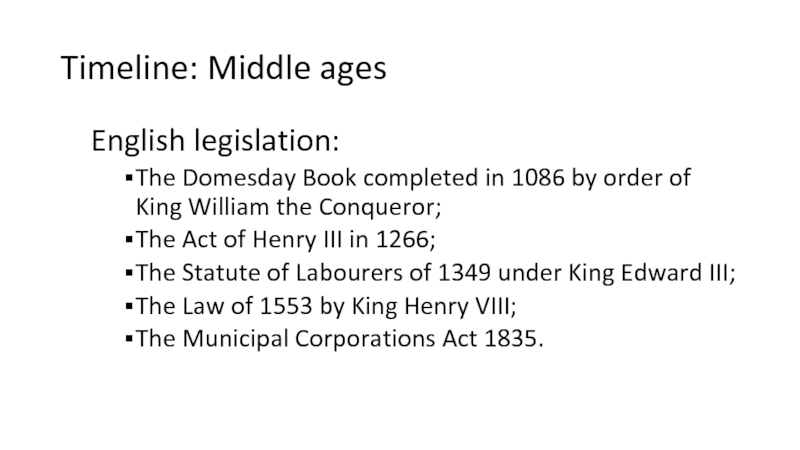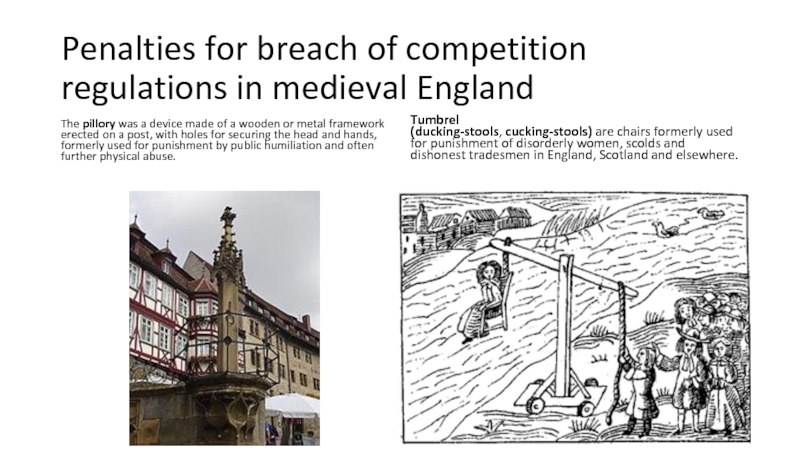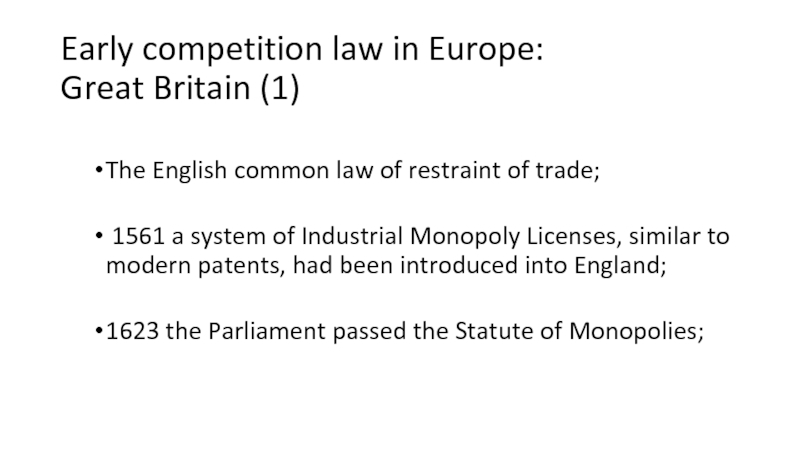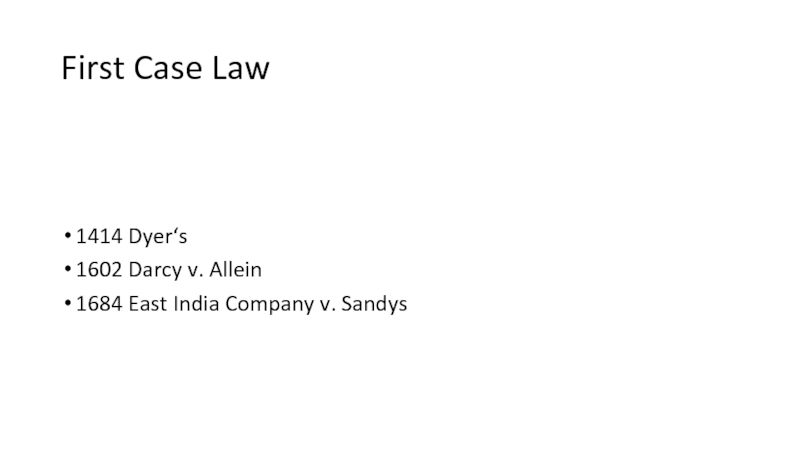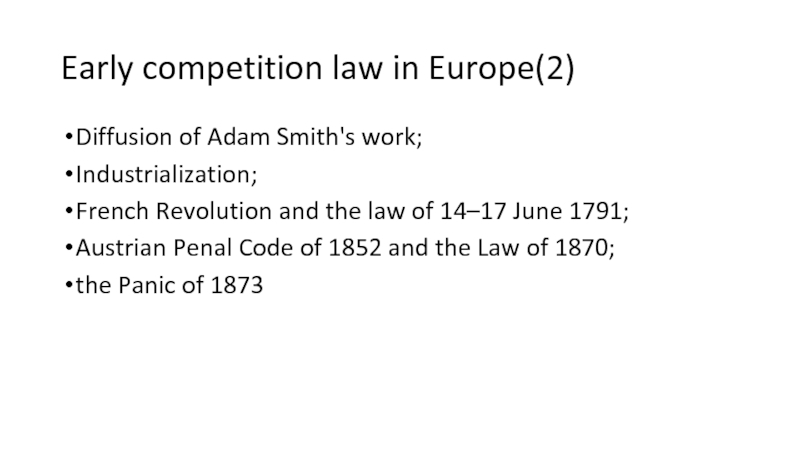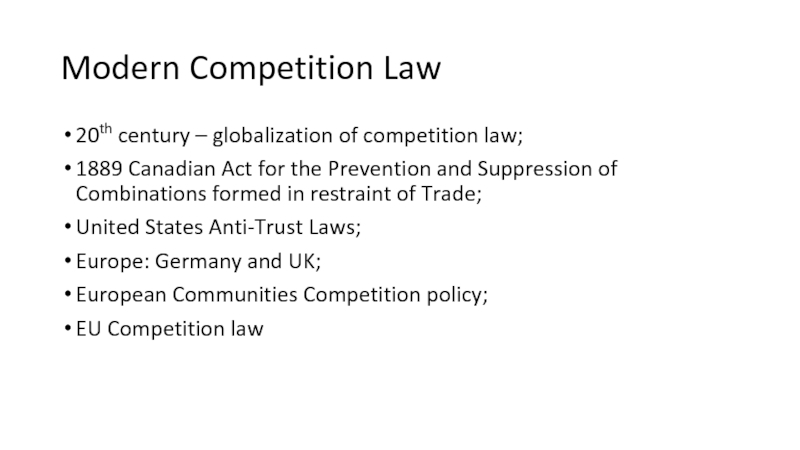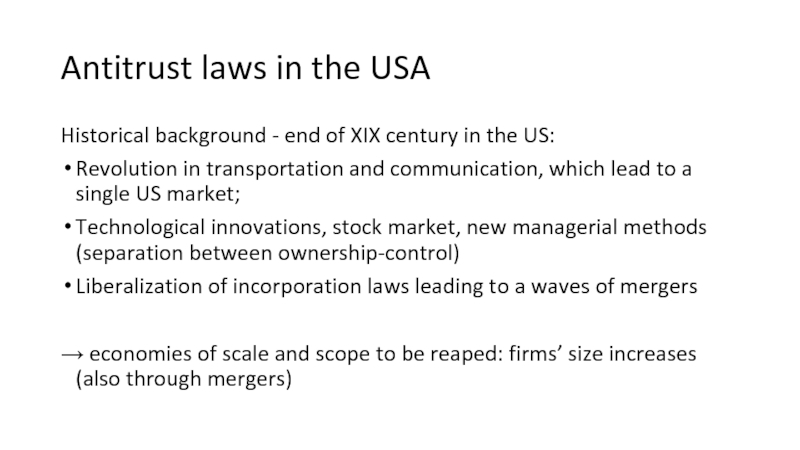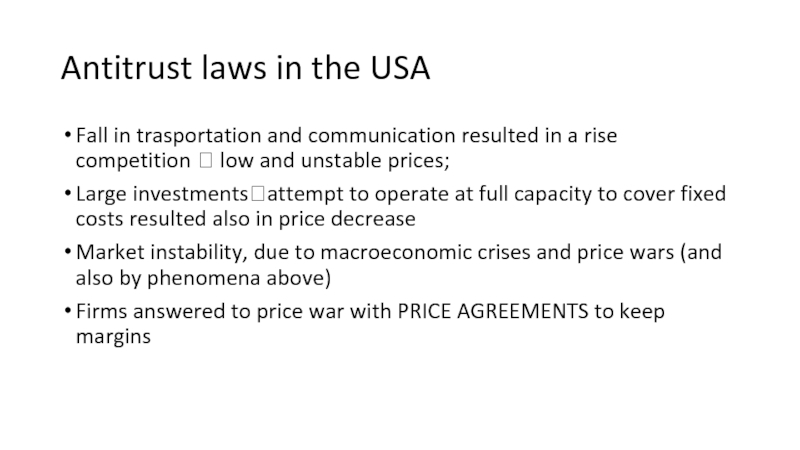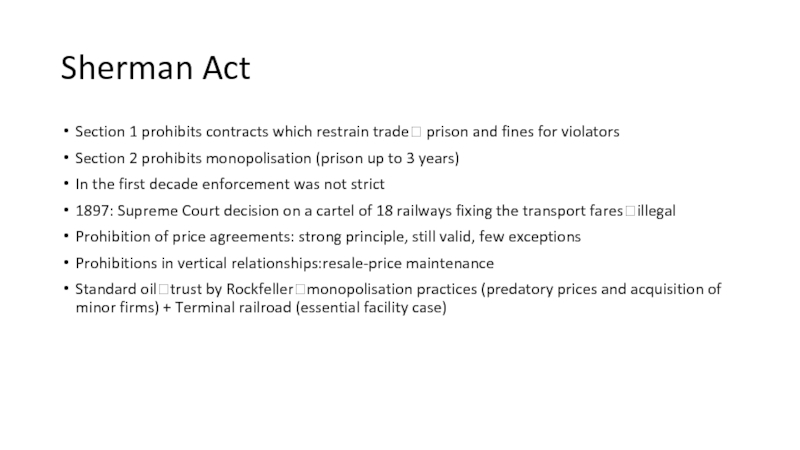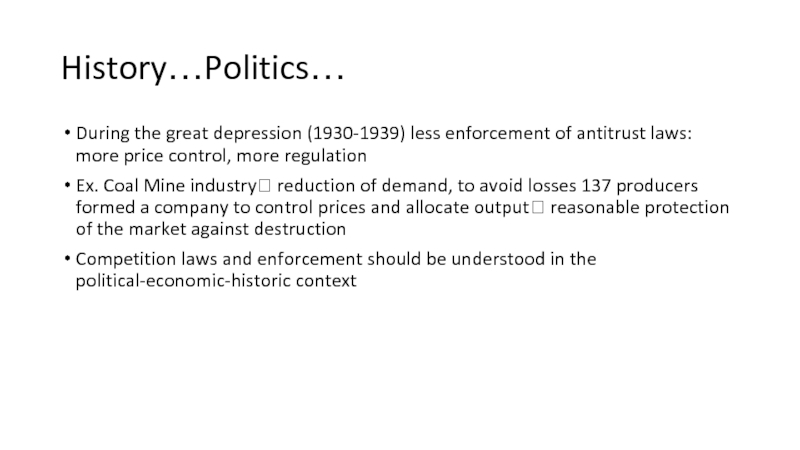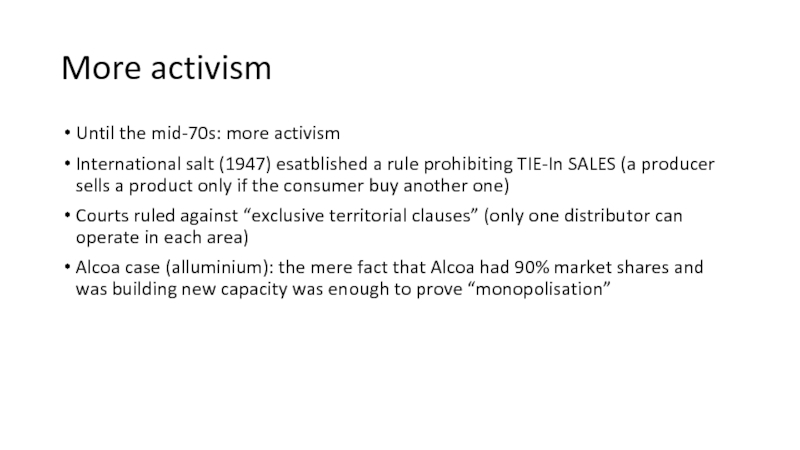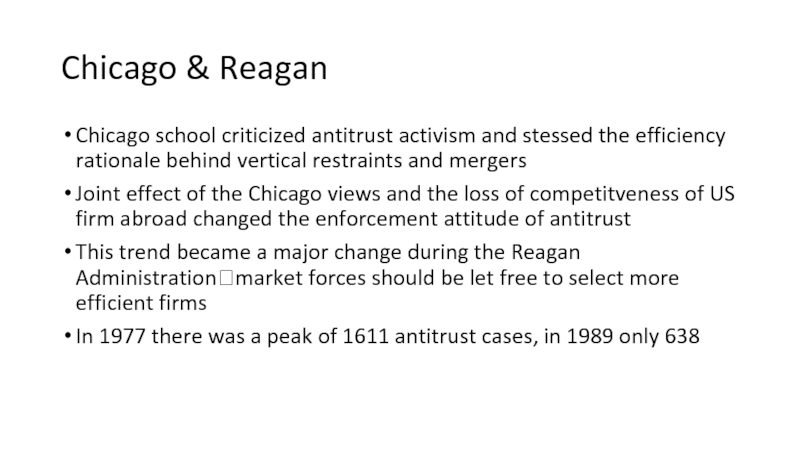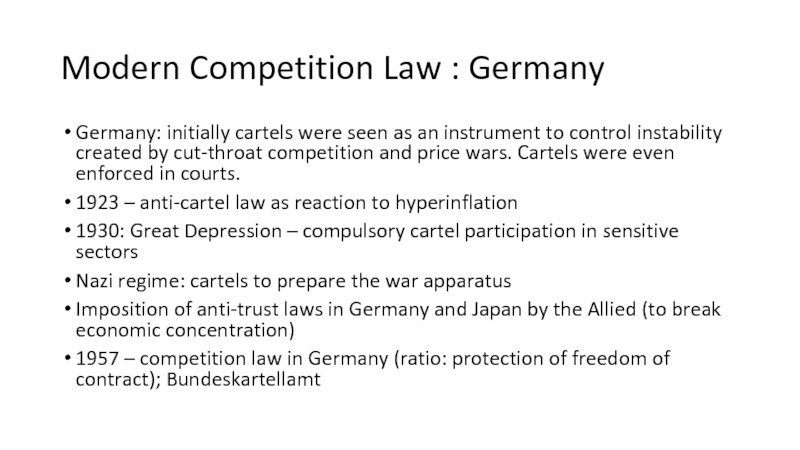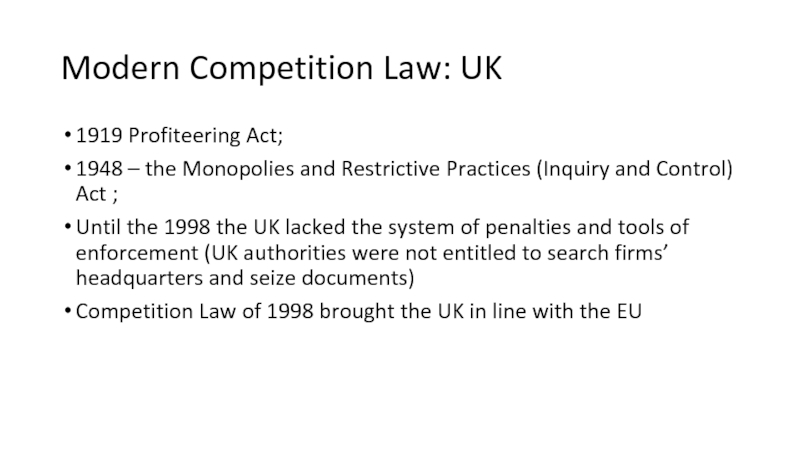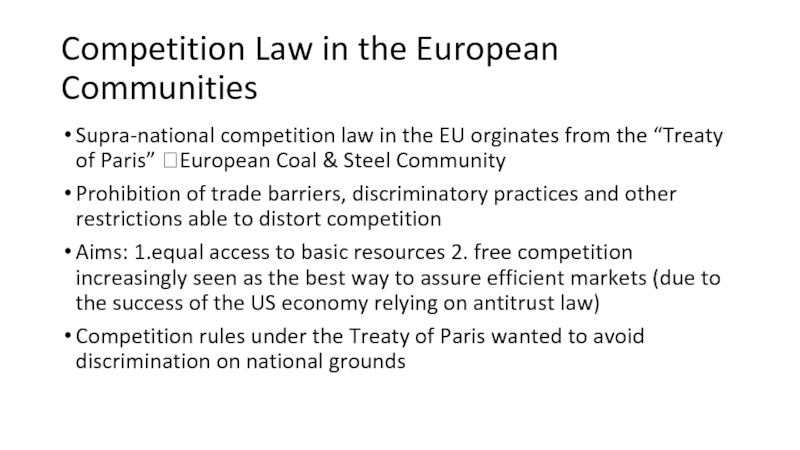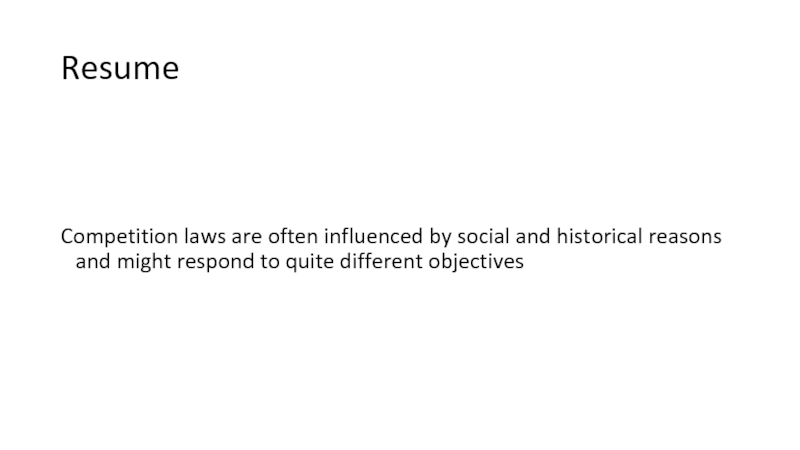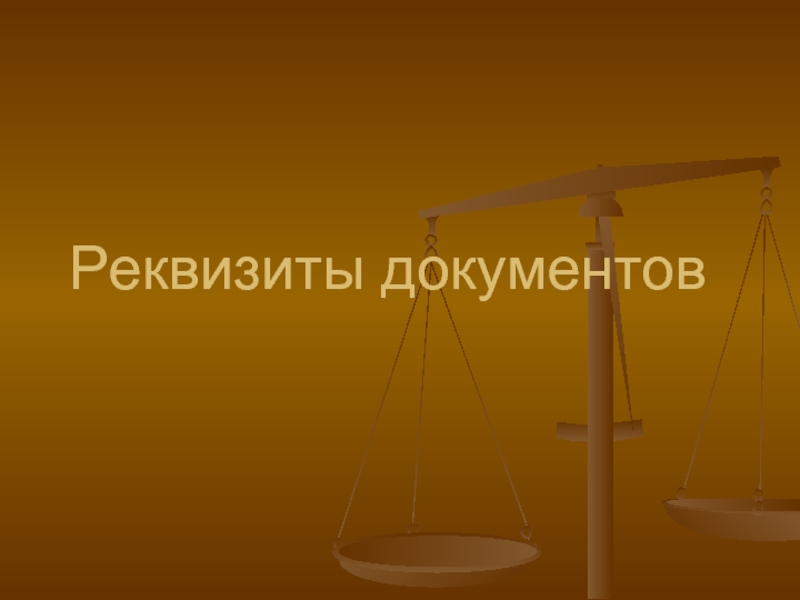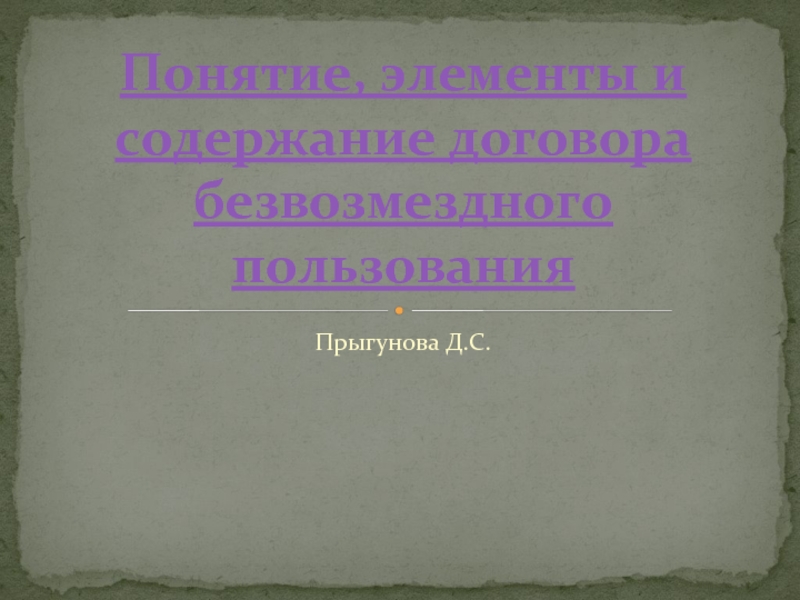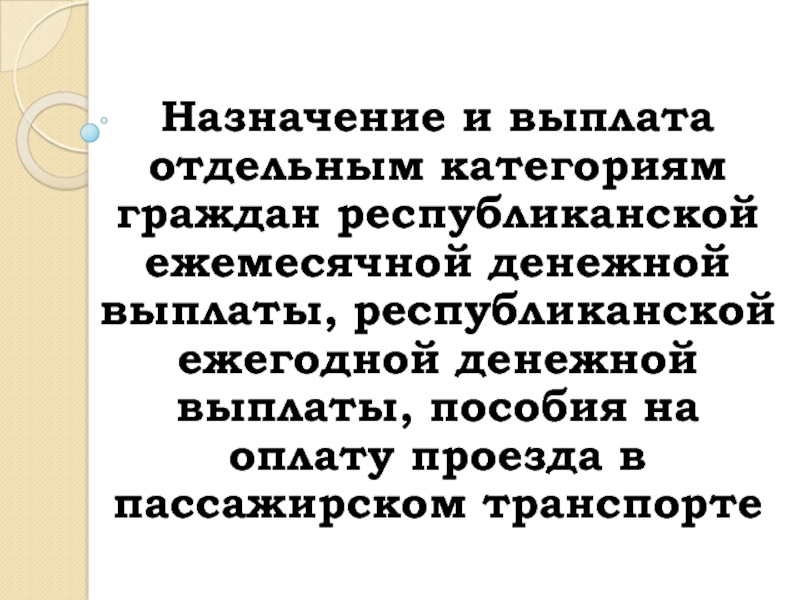- Главная
- Разное
- Дизайн
- Бизнес и предпринимательство
- Аналитика
- Образование
- Развлечения
- Красота и здоровье
- Финансы
- Государство
- Путешествия
- Спорт
- Недвижимость
- Армия
- Графика
- Культурология
- Еда и кулинария
- Лингвистика
- Английский язык
- Астрономия
- Алгебра
- Биология
- География
- Детские презентации
- Информатика
- История
- Литература
- Маркетинг
- Математика
- Медицина
- Менеджмент
- Музыка
- МХК
- Немецкий язык
- ОБЖ
- Обществознание
- Окружающий мир
- Педагогика
- Русский язык
- Технология
- Физика
- Философия
- Химия
- Шаблоны, картинки для презентаций
- Экология
- Экономика
- Юриспруденция
History of Competition Law презентация
Содержание
- 1. History of Competition Law
- 2. Competition (anti-trust, anti-monopoly) law Law Promotes
- 3. Competition law: elements prohibiting agreements or practices
- 4. Key notions of Competition law (1) Cartel
- 5. Key Notions of Competition law (2) Price
- 6. Objectives of Competition policy Protecting the interests
- 7. Other public policy factors affecting competition
- 8. Timeline: Roman Empire legislation Lex Julia
- 9. Timeline: Middle ages Continental Europe Lex Mercatoria:
- 10. Timeline: Middle ages English legislation: The Domesday Book completed
- 11. Penalties for breach of competition regulations in
- 12. Early competition law in Europe: Great Britain
- 13. First Case Law 1414 Dyer‘s
- 14. Early competition law in Europe(2) Diffusion of
- 15. Modern Competition Law 20th century – globalization
- 16. Antitrust laws in the USA Historical background
- 17. Antitrust laws in the USA Fall in
- 18. Antitrust laws in the USA →
- 19. Sherman Act Section 1 prohibits contracts which
- 20. Sherman Act II Sherman act cover price
- 21. History…Politics… During the great depression (1930-1939) less
- 22. More activism Until the mid-70s: more activism
- 23. Chicago & Reagan Chicago school criticized antitrust
- 24. Enforcement 1933: Appalachian Coals v. US, an
- 25. Modern Competition Law : Germany Germany: initially
- 26. Modern Competition Law: UK 1919 Profiteering Act;
- 27. Competition Law in the European Communities Supra-national
- 28. Resume Competition laws are
Слайд 2Competition (anti-trust, anti-monopoly) law
Law
Promotes or seeks to maintain market competition
By regulating
anti-competitive conduct by companies
Слайд 3Competition law: elements
prohibiting agreements or practices that restrict free trading and
competition between business (including in particular the repression of free trade caused by cartels);
banning abusive behavior by a firm dominating a market, or anti-competitive practices that tend to lead to such a dominant position (practices controlled in this way may include predatory pricing, tying, price gouging, refusal to deal, and many others);
supervising the mergers and acquisitions of large corporations, including some joint ventures.
banning abusive behavior by a firm dominating a market, or anti-competitive practices that tend to lead to such a dominant position (practices controlled in this way may include predatory pricing, tying, price gouging, refusal to deal, and many others);
supervising the mergers and acquisitions of large corporations, including some joint ventures.
Слайд 4Key notions of Competition law (1)
Cartel = agreement between competing firms
to control prices or exclude entry of a new competitor in a market, alliances of enterprises;
Predatory pricing (undercutting) = pricing strategy where a product or service is set at a very low price, intending to drive competitors out of the market, or create barriers to entry for potential new competitors;
Tying = practice of selling one product or service as a mandatory addition to the purchase of a different product or service.
Predatory pricing (undercutting) = pricing strategy where a product or service is set at a very low price, intending to drive competitors out of the market, or create barriers to entry for potential new competitors;
Tying = practice of selling one product or service as a mandatory addition to the purchase of a different product or service.
Слайд 5Key Notions of Competition law (2)
Price gouging = pejorative term referring to
a situation in which a seller prices goods or commodities at a level much higher than is considered reasonable or fair. This rapid increase in prices occurs after a demand or supply shock: examples include price increases after hurricanes or other natural disasters;
Refusal to deal;
Mergers & Acquisitions = aspects of strategic management, corporate finance and management
Refusal to deal;
Mergers & Acquisitions = aspects of strategic management, corporate finance and management
Слайд 6Objectives of Competition policy
Protecting the interests of consumers (consumer welfare) and
Ensuring that entrepreneurs have an opportunity to compete in the market economy
Or
Economic efficiency and
European market integration
Etc.
Defense of smaller firms;
Promoting market integration;
Economic freedom;
Fighting inflation;
Fairness and equity;
Слайд 7Other public policy factors affecting competition
Social reasons;
Political reasons;
Environmental reasons;
Strategic reasons: industrial
and trade policies.
Слайд 8Timeline: Roman Empire legislation
Lex Julia de Annona around 50 BCE;
Diocletian’s Edict in 301
CE;
The constitution of Zeno of 483 CE;
Justinian I legislation.
The constitution of Zeno of 483 CE;
Justinian I legislation.
Слайд 9Timeline: Middle ages
Continental Europe
Lex Mercatoria: the constitutiones juris metallici by Wenceslaus II of Bohemia between 1283
and 1305;
Florentine Municipal laws of 1322 and 1325;
The Law of Emperor Charles V in the Holy Roman Empire.
Florentine Municipal laws of 1322 and 1325;
The Law of Emperor Charles V in the Holy Roman Empire.
Слайд 10Timeline: Middle ages
English legislation:
The Domesday Book completed in 1086 by order of King William
the Conqueror;
The Act of Henry III in 1266;
The Statute of Labourers of 1349 under King Edward III;
The Law of 1553 by King Henry VIII;
The Municipal Corporations Act 1835.
The Act of Henry III in 1266;
The Statute of Labourers of 1349 under King Edward III;
The Law of 1553 by King Henry VIII;
The Municipal Corporations Act 1835.
Слайд 11Penalties for breach of competition regulations in medieval England
The pillory was a device
made of a wooden or metal framework erected on a post, with holes for securing the head and hands, formerly used for punishment by public humiliation and often further physical abuse.
Tumbrel (ducking-stools, cucking-stools) are chairs formerly used for punishment of disorderly women, scolds and dishonest tradesmen in England, Scotland and elsewhere.
Слайд 12Early competition law in Europe:
Great Britain (1)
The English common law of restraint
of trade;
1561 a system of Industrial Monopoly Licenses, similar to modern patents, had been introduced into England;
1623 the Parliament passed the Statute of Monopolies;
1561 a system of Industrial Monopoly Licenses, similar to modern patents, had been introduced into England;
1623 the Parliament passed the Statute of Monopolies;
Слайд 14Early competition law in Europe(2)
Diffusion of Adam Smith's work;
Industrialization;
French Revolution and
the law of 14–17 June 1791;
Austrian Penal Code of 1852 and the Law of 1870;
the Panic of 1873
Austrian Penal Code of 1852 and the Law of 1870;
the Panic of 1873
Слайд 15Modern Competition Law
20th century – globalization of competition law;
1889 Canadian Act
for the Prevention and Suppression of Combinations formed in restraint of Trade;
United States Anti-Trust Laws;
Europe: Germany and UK;
European Communities Competition policy;
EU Competition law
United States Anti-Trust Laws;
Europe: Germany and UK;
European Communities Competition policy;
EU Competition law
Слайд 16Antitrust laws in the USA
Historical background - end of XIX century
in the US:
Revolution in transportation and communication, which lead to a single US market;
Technological innovations, stock market, new managerial methods (separation between ownership-control)
Liberalization of incorporation laws leading to a waves of mergers
→ economies of scale and scope to be reaped: firms’ size increases (also through mergers)
Revolution in transportation and communication, which lead to a single US market;
Technological innovations, stock market, new managerial methods (separation between ownership-control)
Liberalization of incorporation laws leading to a waves of mergers
→ economies of scale and scope to be reaped: firms’ size increases (also through mergers)
Слайд 17Antitrust laws in the USA
Fall in trasportation and communication resulted in
a rise competition ? low and unstable prices;
Large investments?attempt to operate at full capacity to cover fixed costs resulted also in price decrease
Market instability, due to macroeconomic crises and price wars (and also by phenomena above)
Firms answered to price war with PRICE AGREEMENTS to keep margins
Large investments?attempt to operate at full capacity to cover fixed costs resulted also in price decrease
Market instability, due to macroeconomic crises and price wars (and also by phenomena above)
Firms answered to price war with PRICE AGREEMENTS to keep margins
Слайд 18Antitrust laws in the USA
→ incentives to form cartels and trusts
→
negative effects on consumers, farmers and small firms
Antitrust legislation on state level;
Little effects at a federal level? in 1890 enough consensus for the SHERMAN ACT
Antitrust legislation on state level;
Little effects at a federal level? in 1890 enough consensus for the SHERMAN ACT
Слайд 19Sherman Act
Section 1 prohibits contracts which restrain trade? prison and fines
for violators
Section 2 prohibits monopolisation (prison up to 3 years)
In the first decade enforcement was not strict
1897: Supreme Court decision on a cartel of 18 railways fixing the transport fares?illegal
Prohibition of price agreements: strong principle, still valid, few exceptions
Prohibitions in vertical relationships:resale-price maintenance
Standard oil?trust by Rockfeller?monopolisation practices (predatory prices and acquisition of minor firms) + Terminal railroad (essential facility case)
Section 2 prohibits monopolisation (prison up to 3 years)
In the first decade enforcement was not strict
1897: Supreme Court decision on a cartel of 18 railways fixing the transport fares?illegal
Prohibition of price agreements: strong principle, still valid, few exceptions
Prohibitions in vertical relationships:resale-price maintenance
Standard oil?trust by Rockfeller?monopolisation practices (predatory prices and acquisition of minor firms) + Terminal railroad (essential facility case)
Слайд 20Sherman Act II
Sherman act cover price fixing, market sharing agreements and
monopolization, not mergers
Firms wishing to coordinate price had the option of merging into a single firm?sharp increse in the number of mergers
The Clayton Act of 1914 extended antitrust to cover mergers reducing competition
The Clayton act also forbids other practices like price discrimination
Creation of the Federal trade Commission – independent agency - that shares with the Department of Justice enforcement of antitrust laws
Firms wishing to coordinate price had the option of merging into a single firm?sharp increse in the number of mergers
The Clayton Act of 1914 extended antitrust to cover mergers reducing competition
The Clayton act also forbids other practices like price discrimination
Creation of the Federal trade Commission – independent agency - that shares with the Department of Justice enforcement of antitrust laws
Слайд 21History…Politics…
During the great depression (1930-1939) less enforcement of antitrust laws: more
price control, more regulation
Ex. Coal Mine industry? reduction of demand, to avoid losses 137 producers formed a company to control prices and allocate output? reasonable protection of the market against destruction
Competition laws and enforcement should be understood in the political-economic-historic context
Ex. Coal Mine industry? reduction of demand, to avoid losses 137 producers formed a company to control prices and allocate output? reasonable protection of the market against destruction
Competition laws and enforcement should be understood in the political-economic-historic context
Слайд 22More activism
Until the mid-70s: more activism
International salt (1947) esatblished a rule
prohibiting TIE-In SALES (a producer sells a product only if the consumer buy another one)
Courts ruled against “exclusive territorial clauses” (only one distributor can operate in each area)
Alcoa case (alluminium): the mere fact that Alcoa had 90% market shares and was building new capacity was enough to prove “monopolisation”
Courts ruled against “exclusive territorial clauses” (only one distributor can operate in each area)
Alcoa case (alluminium): the mere fact that Alcoa had 90% market shares and was building new capacity was enough to prove “monopolisation”
Слайд 23Chicago & Reagan
Chicago school criticized antitrust activism and stessed the efficiency
rationale behind vertical restraints and mergers
Joint effect of the Chicago views and the loss of competitveness of US firm abroad changed the enforcement attitude of antitrust
This trend became a major change during the Reagan Administration?market forces should be let free to select more efficient firms
In 1977 there was a peak of 1611 antitrust cases, in 1989 only 638
Joint effect of the Chicago views and the loss of competitveness of US firm abroad changed the enforcement attitude of antitrust
This trend became a major change during the Reagan Administration?market forces should be let free to select more efficient firms
In 1977 there was a peak of 1611 antitrust cases, in 1989 only 638
Слайд 24Enforcement
1933: Appalachian Coals v. US, an exception
1950-60s: (too) active enforcement
1970s: efficiency
criteria begin to play a role
1980s: (Reagan): laissez-faire
1980s: (Reagan): laissez-faire
Слайд 25Modern Competition Law : Germany
Germany: initially cartels were seen as an
instrument to control instability created by cut-throat competition and price wars. Cartels were even enforced in courts.
1923 – anti-cartel law as reaction to hyperinflation
1930: Great Depression – compulsory cartel participation in sensitive sectors
Nazi regime: cartels to prepare the war apparatus
Imposition of anti-trust laws in Germany and Japan by the Allied (to break economic concentration)
1957 – competition law in Germany (ratio: protection of freedom of contract); Bundeskartellamt
1923 – anti-cartel law as reaction to hyperinflation
1930: Great Depression – compulsory cartel participation in sensitive sectors
Nazi regime: cartels to prepare the war apparatus
Imposition of anti-trust laws in Germany and Japan by the Allied (to break economic concentration)
1957 – competition law in Germany (ratio: protection of freedom of contract); Bundeskartellamt
Слайд 26Modern Competition Law: UK
1919 Profiteering Act;
1948 – the Monopolies and Restrictive
Practices (Inquiry and Control) Act ;
Until the 1998 the UK lacked the system of penalties and tools of enforcement (UK authorities were not entitled to search firms’ headquarters and seize documents)
Competition Law of 1998 brought the UK in line with the EU
Until the 1998 the UK lacked the system of penalties and tools of enforcement (UK authorities were not entitled to search firms’ headquarters and seize documents)
Competition Law of 1998 brought the UK in line with the EU
Слайд 27Competition Law in the European Communities
Supra-national competition law in the EU
orginates from the “Treaty of Paris” ?European Coal & Steel Community
Prohibition of trade barriers, discriminatory practices and other restrictions able to distort competition
Aims: 1.equal access to basic resources 2. free competition increasingly seen as the best way to assure efficient markets (due to the success of the US economy relying on antitrust law)
Competition rules under the Treaty of Paris wanted to avoid discrimination on national grounds
Prohibition of trade barriers, discriminatory practices and other restrictions able to distort competition
Aims: 1.equal access to basic resources 2. free competition increasingly seen as the best way to assure efficient markets (due to the success of the US economy relying on antitrust law)
Competition rules under the Treaty of Paris wanted to avoid discrimination on national grounds
Слайд 28Resume
Competition laws are often influenced by social and historical reasons and
might respond to quite different objectives

